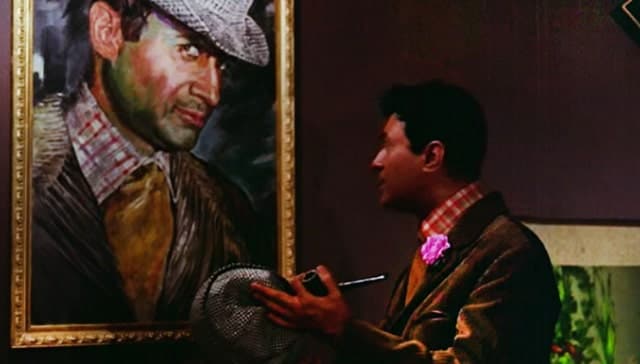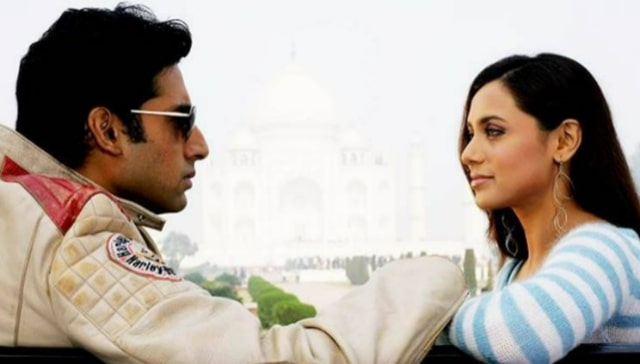Hindi cinema has obsessed over thieves, but also diminished his or her ability to espouse if not sound politics, then at least sound judgment.
In a scene from Shalimar (1978), Sir John played by Rex Harrison tells Kumar while shooting a rifle at a couple of tribal slaves “Duniya ki sabse badi bimari gareebi hai Mr Kumar”. In a post-colonial world, the politics of Shalimar is intriguing for various reasons. Fronted by Dharmendra as Kumar, the film serves as an imperfect allegory for colonial oversight. It flopped on release, but has gained a storied place in our cinematic history. But what Shalimar also does is contemplate the politics of thievery and deception in general. Not all thieves steal out of greed, or some grand colonial misconception about rule and territory, as the Empire would argue. But some steal out of need, circumstance or as one last attempt at fulfilling prophecies about the self.
Thieves and dacoits have been around in our cinema for generations. In Dev Anand’s Jewel Thief, a man orchestrates a rather elaborate ruse to penetrate a gang of secret gold hunters. It’s possibly the first film that for the longest part, alludes to a dicey anti-hero. Post-Independence cinema is filled with sorry-looking pickpockets who exhibited a certain oppressive desperation, but by the 70s, this desperation had been replaced by carefree bravado. Jay and Veeru, from Sholay, steal because they like to or possibly want to. In Shalimar, Kumar pretends to be a thief, a man cornered by situational hazards so he can participate in a whimsical contest centring the annexure of a precious stone.

Only in mainstream Indian cinema have thieves been portrayed as purveyors of destiny, commanding the kind of self-assurance that was difficult to possibly relate to in a country rife with crime and uncertainty. A lot of these stories of course ape the presence of actual dacoits and small-time thieves operating in India’s urban areas but not until the economic reforms of the 90s did the act of stealing, actually transform into an ‘art’. Roop ki Raani Choron ka Raja, for example, is about two thieves who have wild differing styles, each more elaborate than the other, but a common shared history they eventually avenge. In Bade Miyaan Chotte Miyaan, two friends have a deceptively warm and endearing method to looting – they simply befriend people.
Look back and while the 60s and 70s still saw looting and thievery as a sort of social ill one was forced into the 90s liberated this idea to the point of being stylised virtue. Stealing became a vehicle of self-expression. In Dhoom, for example the protagonist is a gang of robbers who steal expensive items on possibly jus-as-expensive motorbikes. The modern thief wasn’t just suave and bespoke but had tastes of his own. This evolution of course also mirrors the gradual rise of corruption in Indian politics. When crores are being siphoned from the govt exchequer, it is natural to expect the uncouth thief to up his standards too. He or she, after all, has to work harder for it.
By the time Race came out in 2008, thieves and crooks ran businesses, invested money they had stolen and made grand, sophisticated plans about how they’d steal and what they’d steal. In Jewel Thief, Amar walks into a jewellery store and robs with a more generic approach like collection. Shalimar is possibly the first film to tease a very specific object, a storied stone with a value above 100 crores. The class awareness of Jewel Thief grounds it in a narrative that espouses gold, a common occurrence in Indian households as the precious object of attention. There is a syndicate that operates secretively but it doesn’t obsess over the specifics of the loot, only its collective value. By the time liberalisation came around, political scams uncovered by the Indian press had begun to quantify loot. Hence, it would no longer make sense to just pick a rich man’s pocket, or rob the bank branch next door. The politicians were already doing that. And so our thieves started to rob things more illustrious, eccentric or undefinable. In Bunty aur Babli for example, both Abhishek Bachchan and Rani Mukerji sell off the Taj Mahal.
The class-conscious birth of the pickpocket has been casually galloped by the larger-than-life anti-hero idolised by the Dhoom and Race franchises. It might act as a persuasive argument against the regiments of privilege but in most recent films, thieves have come from a source of flamboyant self-expression rather than desperation. Incredibly, even Hindi cinema’s looters look far richer than the common man, awe-inspiring for both, their methods and their pursuits. Even a film as grandiose as Roop ki Rani and Choron ka Raja, argues that it takes certain brand of knuckled stubbornness and criminality to defeat the biggest criminal of all. It’s quite possibly the last film about a bunch of thieves with a sense of purpose about it before thievery itself became an empty spectacle, pointlessly, for the heck of it.
Manik Sharma writes on art and culture, cinema, books, and everything in between.
Read all the Latest News, Trending News, Cricket News, Bollywood News, India News and Entertainment News here. Follow us on Facebook, Twitter and Instagram.

